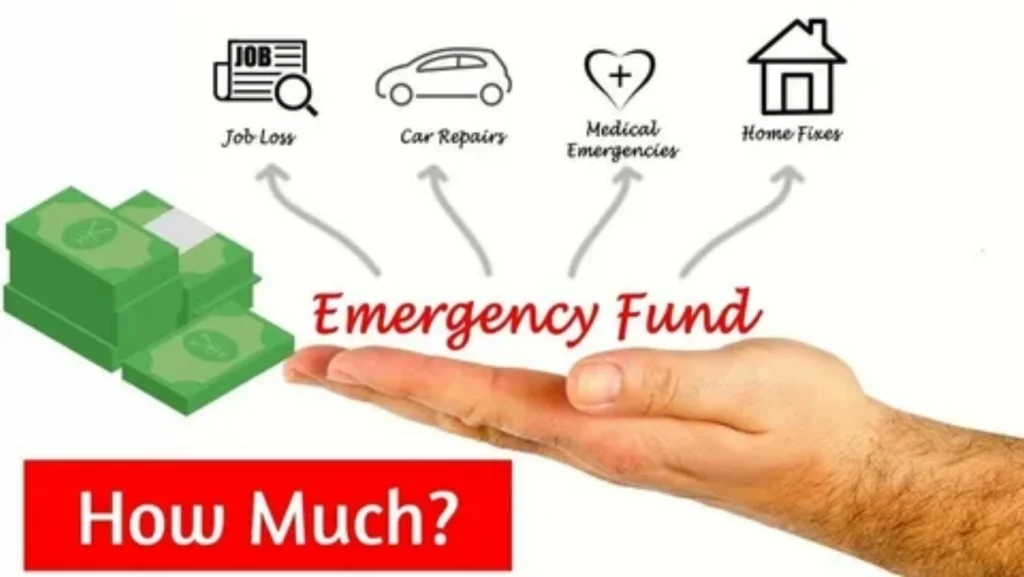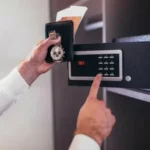Introduction
When building an emergency fund, one critical question arises: Should you keep your savings in cash or digital form?
Each option has unique advantages and risks:
- Cash = Immediate access, but vulnerable to theft/disasters.
- Digital = Secure and interest-earning, but reliant on systems.
This guide will break down:
✅ Pros and cons of cash vs. digital emergency funds
✅ When to use each (real-life scenarios)
✅ Hybrid strategies for the best of both worlds
✅ How much to keep in cash vs. bank
✅ Safety tips for both methods
Let’s find the right balance for your emergency savings.

1. What Is an Emergency Fund? (Quick Refresher)
Low-competition keyword: “why do I need an emergency fund”
An emergency fund is 3–6 months’ worth of living expenses set aside for:
✔ Job loss
✔ Medical emergencies
✔ Car/home repairs
✔ Unexpected travel
First goal? Save $1,000 as a starter fund (Dave Ramsey’s Baby Step 1).
2. Cash Emergency Fund: Pros & Cons
Low-competition keyword: “is keeping emergency cash at home safe”
Pros of Cash:
✔ Instant access (no banks/ATMs needed).
✔ Works during power outages or digital failures.
✔ No bank fees or withdrawal limits.
✔ Privacy (no transaction records).
Cons of Cash:
❌ Theft risk (if not hidden well).
❌ No insurance (unlike FDIC-protected banks).
❌ Loses value to inflation (doesn’t earn interest).
❌ Damage risk (fire, water, pests).
💡 Best for: Storing 200–200–1,000 for immediate-access emergencies.
3. Digital Emergency Fund: Pros & Cons
Low-competition keyword: “best digital account for emergency fund”
Pros of Digital:
✔ FDIC-insured (up to $250,000 per account).
✔ Earns interest (high-yield savings accounts).
✔ Trackable (apps/bank statements).
✔ No physical damage risk.
Cons of Digital:
❌ Not accessible during power/Internet outages.
❌ Bank holidays/processing delays.
❌ Potential fees (withdrawal limits, minimum balances).
💡 Best for: Storing $1,000+ for larger, non-urgent emergencies.
4. When to Use Cash vs. Digital (Real-Life Scenarios)
Low-competition keyword: “when to keep cash vs bank emergency fund”
| Situation | Cash | Digital |
|---|---|---|
| Power outage | ✅ Yes (ATMs down) | ❌ No |
| Sudden car repair | ✅ Yes (if mechanic takes cash) | ✅ Yes (if debit card works) |
| Job loss (3+ months) | ❌ No (too risky for large amounts) | ✅ Yes |
| Natural disaster evacuation | ✅ Yes (fast access) | ❌ Maybe (if ATMs work) |
5. How Much Cash Should You Keep at Home?
Low-competition keyword: “safe amount of cash to keep at home”
| Living Situation | Recommended Cash |
|---|---|
| Urban, high-crime area | 200–200–500 |
| Rural, disaster-prone | 500–500–1,000 |
| Suburban, low risk | 300–300–800 |
⚠️ IRS Note: Depositing $10,000+ cash later may trigger reporting.

6. Where to Keep a Digital Emergency Fund
Low-competition keyword: “best high-yield savings account for emergencies”
Best Account Types:
- High-Yield Savings Account (HYSA)
- Earns 4–5% APY (vs. 0.01% at big banks).
- Examples: Ally, Marcus, Discover.
- Money Market Account (MMA)
- Slightly higher interest + debit card access.
- Separate Checking Account
- No withdrawal limits (but no interest).
🔒 Rule: Keep digital funds at a different bank than your main account to avoid temptation.
7. Hybrid Approach: The Best of Both Worlds
Low-competition keyword: “cash and digital emergency fund strategy”
How It Works:
- Keep $500 in cash at home (for immediate crises).
- Store 1–3 months’ expenses digitally (HYSA for interest).
- Use prepaid debit cards as a backup ($200 loaded).
Example Hybrid Setup:
| Fund Tier | Amount | Storage Method | Purpose |
|---|---|---|---|
| Tier 1 | $500 | Hidden cash at home | Urgent (power outage, locksmith) |
| Tier 2 | $1,500 | High-yield savings | Medical bills, car repairs |
| Tier 3 | 3–6 mos. | Money market account | Job loss, major emergencies |
8. Safety Tips for Cash & Digital Funds
Low-competition keyword: “how to protect emergency savings from theft”
Cash Safety:
✔ Use a fireproof/waterproof safe (not just a drawer).
✔ Split cash into multiple hiding spots.
✔ Don’t tell anyone where you stash it.
Digital Safety:
✔ Enable two-factor authentication on bank accounts.
✔ Use a separate email for financial logins.
✔ Avoid public Wi-Fi for banking transactions.
9. How to Build Your Emergency Fund Fast
Low-competition keyword: “how to save $1,000 emergency fund in 30 days”
Quick Savings Boosters:
- Sell unused items (300–300–500 via Facebook Marketplace).
- Cut subscriptions (50–50–200/month).
- Side gigs (Delivery driving = 15–15–25/hour).


